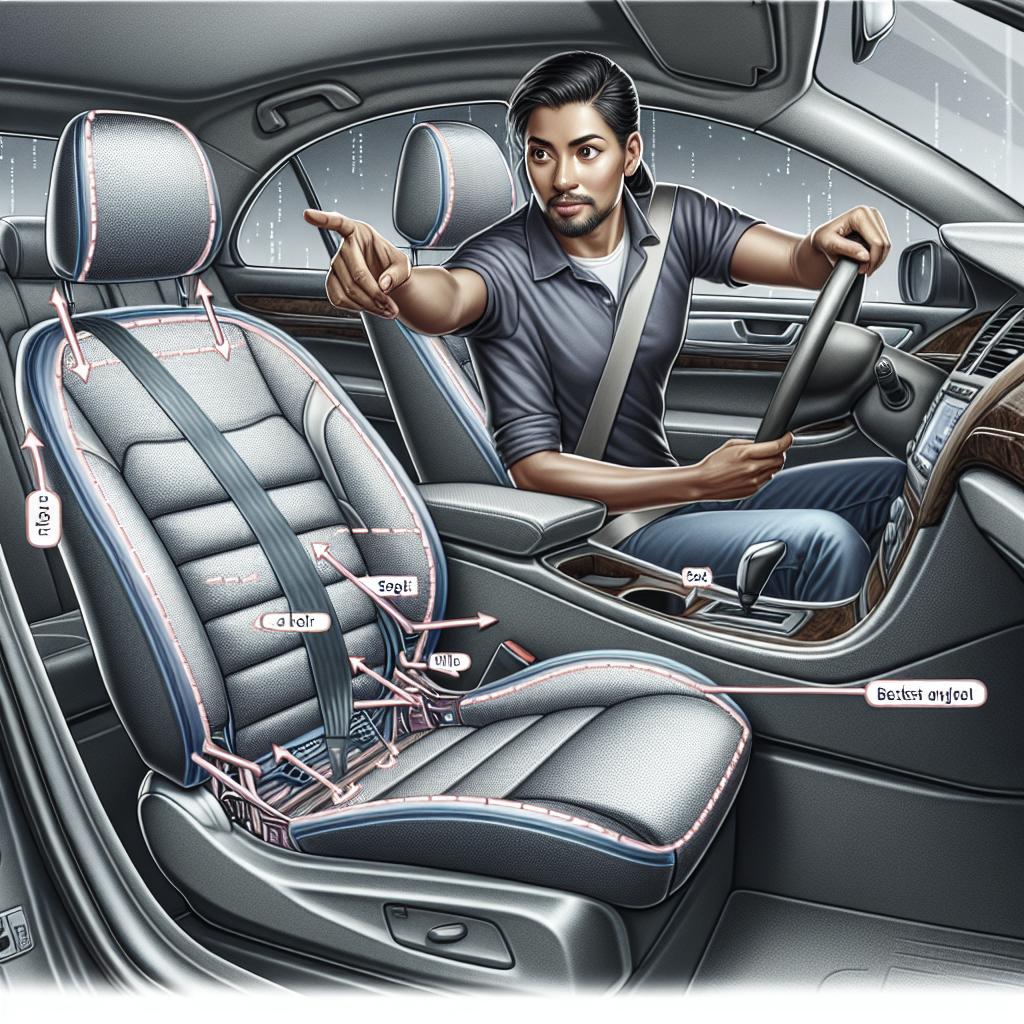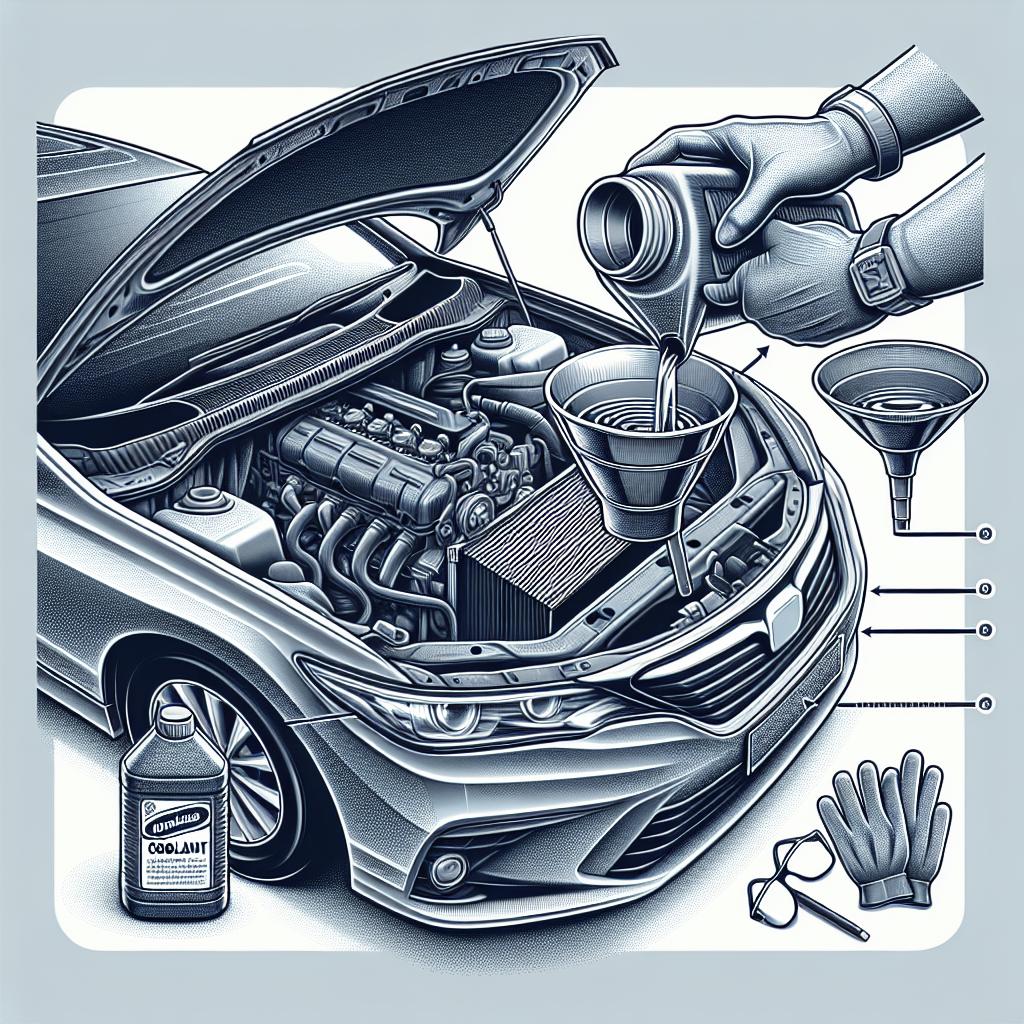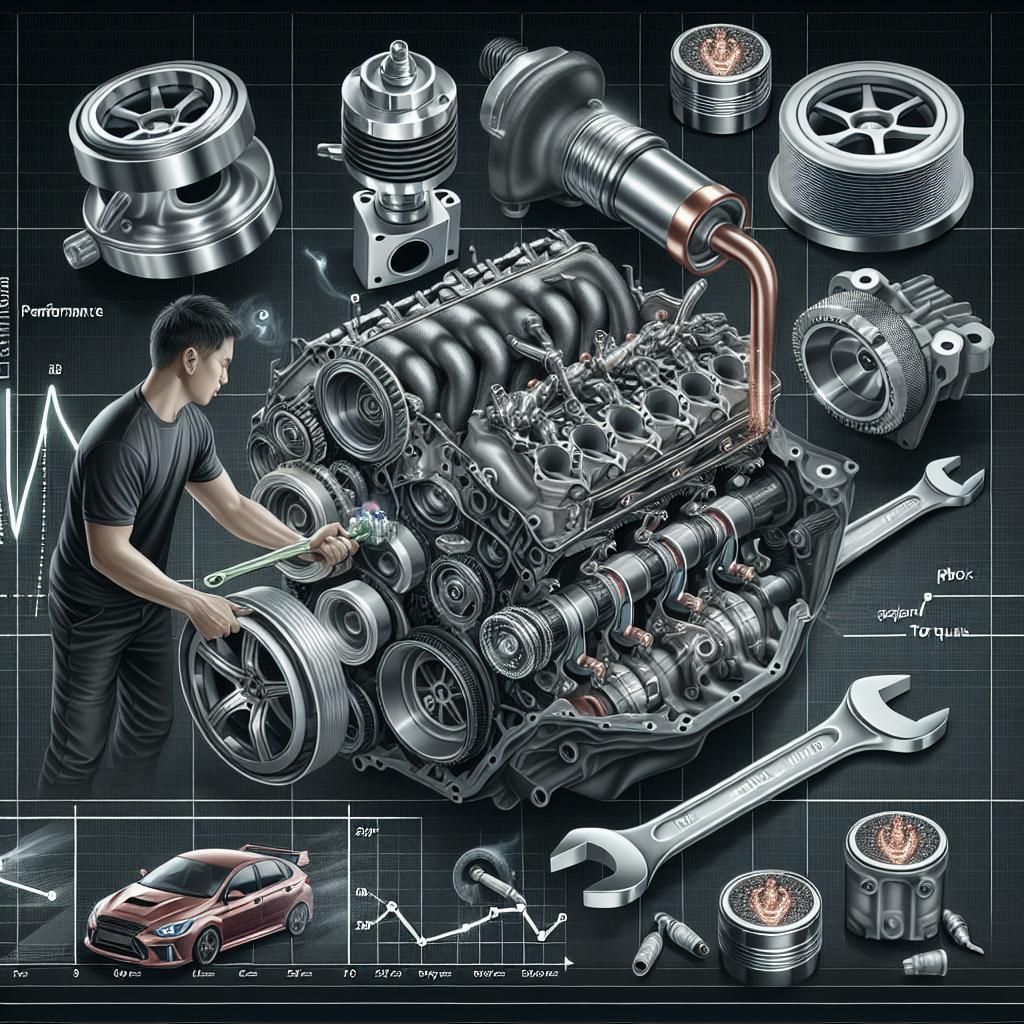“`html
How to Adjust Car Seat Ergonomics
Comfortable and safe driving involves more than expertly navigating the roads; it’s crucial to consider how you’re seated. Proper car seat ergonomics can significantly impact the driver’s comfort and safety, helping to prevent discomfort and maintain focus. This article examines the differences between car seats and regular chairs, explores the aches and pains driving might cause, and identifies high-risk professions. We’ll reveal what to consider when choosing a vehicle to improve ergonomics, provide specific advice on car features, and offer tips to adjust your seat perfectly. By the end, you’ll have a comprehensive understanding of how to ensure every drive is as comfortable as possible.
On this page
This guide breaks down everything you need to know about car seat ergonomics, offering insights into proper posture, ergonomic hazards in long-distance driving, and adjustments to improve comfort and safety. Here’s what you’ll learn:
- Differences in sitting in a car seat vs. a chair
- Potential discomfort or pain from driving
- Occupations most at risk
- Causes of driving-related aches
- General tips for driving comfort
- Vehicle selection tips for optimum ergonomics
- Specific seat and feature adjustments
Is sitting in a car seat the same as sitting in a chair?
At first glance, sitting in a car seat and a chair might seem similar, given that both support the body for extended periods. However, the significant difference lies in how these seats are designed to accommodate unique activities. A car seat is built to absorb vibrations, provide stability during movement, and offer accessible controls for various adjustments, unlike a stationary chair.
A well-designed car seat aims to reduce strain by promoting a posture conducive to safe driving. Factors such as lumbar support, seat height, and adjustable features like headrests help mitigate the discomfort associated with being seated for extended periods. It’s a delicate balance between mobility and stability that a standard office chair cannot provide.
In essence, the dynamic interaction between driver and vehicle during navigation demands a tailored design approach that differentiates car seats from regular seating solutions. Recognizing and optimizing this configuration can have profound implications for ergonomic health.
Can driving cause discomfort or pain?
Driving can indeed lead to discomfort or pain, often exacerbated by long durations spent in a less-than-ideal seating position. Common issues include lower back pain, neck strain, and fatigue, resulting from maintaining static postures that don’t provide adequate support or relief to the involved muscle groups.
Factors such as inadequate lumbar support, incorrect seat height, or an improperly adjusted seatback can magnify these discomforts. The repetitive nature of driving, combined with the lack of movement freedom, contributes to the likelihood of experiencing these symptoms.
Without appropriate ergonomic adjustments, the discomfort can evolve into chronic pain, undermining both physical well-being and concentration on the road, which can potentially affect driving safety.
What occupations are at risk?
Certain professions inherently involve more driving, putting them at greater risk for ergonomic issues associated with prolonged seat occupation. These include long-haul truck drivers, delivery personnel, sales staff, and taxi or rideshare drivers who spend considerable portions of their workday behind the wheel.
For these workers, the cumulative effect of chronic driving-related posture stress can lead to significant muscle and joint discomfort, ultimately impairing productivity and quality of life. In some cases, extended exposure to poor ergonomics may even result in work-related musculoskeletal disorders (WMSDs).
Awareness and implementation of ergonomic practices can mitigate these risks, emphasizing the importance of education and preventative measures in these high-occupancy professions.
What causes these aches and pains?
The primary causes of driving-related discomfort arise from both the static and dynamic strains placed on the body due to suboptimal seating posture. Poor seat design, incorrect posture, and lack of support in key areas such as the lumbar region can contribute to these physical conditions.
Additionally, environmental factors like cramped cabin space, limited seat adjustability, and excessive vehicle vibrations accentuate the physical demands on drivers. These issues combine to generate pressure points and strain, often manifesting as discomfort or pain in the neck, back, or shoulders.
Recognizing these discomfort triggers and implementing ergonomic interventions is crucial to prevent them from escalating into chronic issues.
In general what do I need to know to improve driving comfort?
Improving driving comfort involves a multi-faceted approach comprising posture adjustments, vehicle feature utilizations, and adopting ergonomically friendly habits. Ensuring the seat properly supports the spine’s natural curve is critical for reducing strain on the lower back.
It’s beneficial to adjust your seat height such that your hips are at or above knee level, ensuring optimal eyesight and minimizing hamstring tension. Taking advantage of seat cushions, lumbar rolls, and neck pillows where needed can further enhance seating comfort.
Frequent breaks to stretch and adjust position are equally important, especially during longer journeys, to refresh posture and mitigate the adverse effects of prolonged seating.
More specifically, what do I look for when selecting a vehicle?
Getting in and out the vehicle
Ease of access into and out of a vehicle significantly impacts ergonomic comfort. A car should offer enough door width and height to facilitate seamless entry and exit, minimizing the need for excessive bending or twisting, which can stress the back and joints.
Vehicles with adjustable seat heights and positions can accommodate varying body types, ensuring a more personalized and comfortable driving experience. Test entry and exit maneuvers when contemplating a new vehicle to ensure it meets your ergonomic needs.
Sitting in the cab
The cab should provide sufficient headroom and legroom, preventing cramped seating even on extended drives. The internal design should accommodate adjustments that align with the driver’s natural seating posture.
Consider the field of vision and mirror placements within the cab; they should require minimal head and body movement to reduce the risk of strain. A well-placed ergonomic dashboard allows easy access to essential controls with minimal reach.
Seats
The seat itself plays a pivotal role in driver comfort. Opt for vehicles with contoured seats offering substantial lumbar support and adjustability such as tilt and length options to accommodate different body types and seating preferences.
Seat material also matters; breathable and cushioned materials that help regulate temperature and provide extended comfort are ideal for long driving stints.
Seat Back Rest and Lumbar Support
Effective lumbar support deems critical for spine health during driving. Look for vehicles offering seats with adjustable lumbar support that you can tailor to match the natural arch of your lower back.
Adjustable seatback tilt and recline settings are equally vital in helping alleviate pressure points and enhance comfort by ensuring optimal spinal posture.
Seat Belt
A secure but comfortable seat belt is indispensable for safety and ergonomic positioning. Ensure the seat belt is height-adjustable, allowing the shoulder strap to rest snugly across the chest without cutting into the neck.
Regularly check that the seat belt mechanism functions smoothly, offering a balance between support in sudden stops and unobtrusive wear during regular driving.
Head Restraint (Head Rest)
The headrest plays a crucial role in minimizing neck strain and protecting against whiplash injuries. It should align with the top of your head or just below to offer effective support and protection.
Manage the distance between your head and the restraint to prevent excessive backward movement during abrupt stops, which secures both comfort and safety.
Air Bags
While airbags are primarily a safety feature, their positioning influences comfort. Properly-aligned airbags support safe driver restraint without infringing on comfort or seating space.
Ensure the seating arrangement does not impede airbag deployment or effectiveness, and remain conscious of airbag positions when adjusting seating.
Steering Wheel
Steering wheel position is critical for arm and shoulder comfort. Select a position where your arms are slightly bent, allowing for easy control and reducing fatigue.
Look for telescopically and tilt-adjustable steering wheels, which enable customization that accommodates both comfort and accessibility preferences.
Pedals and Gear Shift
Ensure pedal alignment and distance allow for comfortable control without over-extensions or strain. Feet should rest comfortably when not in use, and transition between pedals should feel natural.
Gear shifts, whether manual or automatic, should remain within easy reach. The layout should not require excessive effort or awkward posture to operate efficiently.
Trunk
Although not related to seating comfort, considering trunk space ergonomics can prevent strain from lifting or maneuvering heavy items into and out of the vehicle.
Seek vehicles with a low-lift trunk height and accessible design, which facilitate physical comfort while loading or unloading items.
Car Environment
The car’s interior climate contributes significantly to driver comfort. Effective air conditioning and ventilation systems maintain an ideal ambient temperature, reducing stress and fatigue.
Appropriate lighting and ambient sound control further ensure an optimal environment for concentration and relaxation during drives.
How do I adjust the driver’s seat to fit me?
Adjusting the driver’s seat properly is central to achieving personalized comfort. Begin with the seat height; your hips should align at or slightly above your knees, offering a clear view of the road without requiring posture strain.
Move the seat forward or backward to ensure you can reach the pedals with minimal leg stretch and control the steering comfortably. Adjust the backrest to maintain a slight recline, supporting the spine’s natural curve while avoiding excessive leaning.
Customize the lumbar support to nestle into your lower back seamlessly. The head restraint, too, should be at an optimal height, supporting neck alignment. These adjustments work in unison, delivering a driving experience that prioritizes both comfort and safety.
Future prospects
With a genuine understanding of car seat ergonomics, you’re better equipped to prevent discomfort and enhance overall driving satisfaction. The detailed insights provided serve as a foundation to inform your future vehicle choices and seat adjustments, fostering healthier driving habits. By prioritizing ergonomic vigilance, you’ll not only improve your road experience but also safeguard your long-term health, facilitating a driving lifestyle that is as comfortable as it is efficient. Below is a concise summary of the critical points discussed in this article.
| Topic | Key Points |
|---|---|
| Sitting in a car seat vs. a chair | Car seats designed for mobility and stability; requires ergonomic adjustment for safety and comfort. |
| Driving Discomfort | Discomfort common due to static posture; adjust seat features to alleviate potential pain. |
| At-risk Occupations | Long-distance drivers like truck and taxi drivers are at higher risk for ergonomic discomfort. |
| Aches and Pain Causes | Poor seat design and posture, limited space, and vibrations contribute to back and neck issues. |
| Improving Driving Comfort | Maintain a natural spine curve with seat adjustments; use additional supports as needed. |
| Vehicle Selection | Select cars with ergonomic adjustments in seat, steering, and cabin design for personalized comfort. |
| Driver’s Seat Adjustment | Customize seat height, back angle, and lumbar support to fit your body and preferences. |
“`


